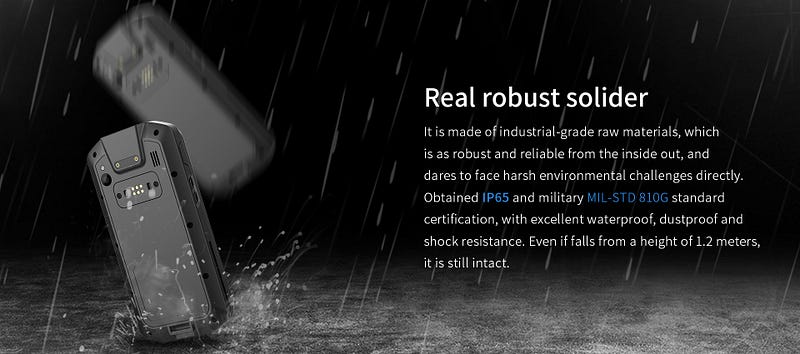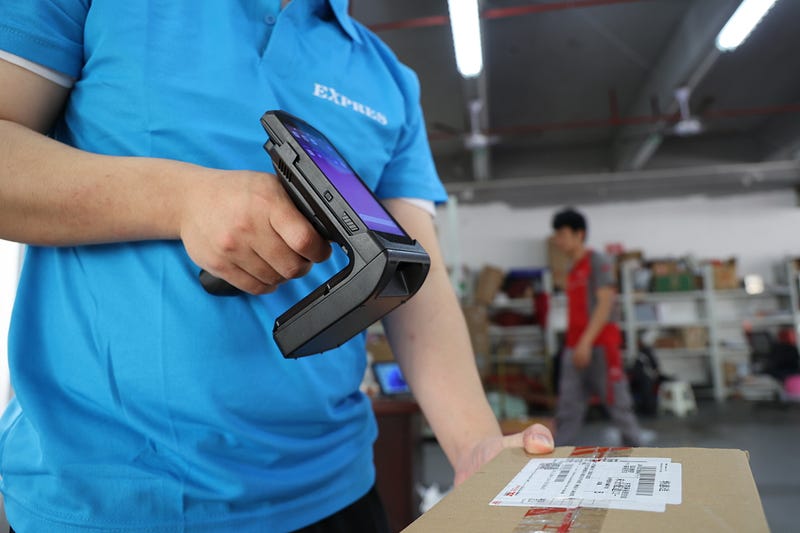Revolutionizing Inventory Management with RFID Tablets
In the realm of inventory management, where precision and efficiency are paramount, the advent of RFID (Radio-Frequency Identification) tablets has ushered in a new era of contactless efficiency. These tablets, equipped with RFID technology, have become instrumental in transforming how businesses track, monitor, and manage their inventory. Let’s delve into the contactless efficiency of RFID tablets and their profound impact on the landscape of inventory management.

Automated Identification: The Essence of RFID Technology
At the core of RFID tablets is the automated identification of items using RFID tags. Unlike traditional barcode systems that require line-of-sight scanning, RFID technology operates wirelessly and contactlessly. Each inventory item is affixed with an RFID tag containing a unique identifier. RFID tablets, armed with RFID readers, can swiftly and accurately capture information from multiple tags simultaneously. This automation eliminates the need for manual scanning, reducing the time and effort traditionally associated with inventory tracking.
Real-Time Data Capture: The Power of Instant Updates
One of the significant advantages of RFID tablets in inventory management is the ability to capture data in real time. As items move through the supply chain or within a warehouse, RFID tablets continuously update the inventory database with precise information on their location, quantity, and status. This real-time visibility empowers businesses with accurate, up-to-the-minute insights into their inventory levels, allowing for proactive decision-making and minimizing the risk of stockouts or overstock situations.
Efficiency in Stocktaking: Swift and Accurate Inventory Audits
Conducting regular stocktaking or inventory audits is a fundamental aspect of inventory management. RFID tablets revolutionize this process by enabling swift and accurate audits. Traditionally, manual stocktaking could be a time-consuming and error-prone task. RFID tablets, on the other hand, allow for the rapid scanning of RFID tags, providing a comprehensive view of inventory levels with minimal manual intervention. This efficiency not only reduces the disruption to operations during audits but also enhances the overall accuracy of inventory records.
Streamlined Receiving Processes: Accelerating Goods Intake
When shipments arrive, expediting the receiving process is crucial to maintaining operational flow. Handheld Rfid Reader streamline the receiving process by automating the identification and registration of incoming goods. As soon as shipments are unloaded, RFID tablets can scan and record the RFID tags on each item, updating the inventory system in real time. This contactless approach accelerates goods intake, reduces the risk of human error, and ensures that the inventory database reflects the most current information.
Error Reduction and Accuracy: Enhancing Data Integrity
The contactless nature of RFID technology significantly reduces the risk of errors in inventory management. Manual data entry and barcode scanning can introduce inaccuracies, leading to discrepancies in inventory records. RFID tablets, with their ability to automatically capture data from RFID tags, minimize the human element in the process. This reduction in manual intervention not only enhances data integrity but also contributes to a more reliable and trustworthy inventory management system.

Integration with IoT: Expanding Capabilities for Smart Inventory
The synergy between RFID tablets and the Internet of Things (IoT) opens up new possibilities for smart inventory management. RFID tags, when equipped with IoT sensors, can transmit additional data about the condition, temperature, or environmental factors affecting inventory items. RFID tablets, as central hubs in this ecosystem, can capture and interpret this information, providing businesses with a holistic view of their inventory’s health. This expanded capability is particularly valuable for industries dealing with sensitive or perishable goods.
Enhanced Visibility in Warehousing: The RFID Advantage
Within the confines of a warehouse, where inventory is often stored in diverse locations and configurations, RFID tablets offer enhanced visibility. Warehouse personnel equipped with RFID tablets can quickly locate specific items by scanning RFID tags, eliminating the need for manual searches or guesswork. This enhanced visibility not only accelerates order fulfillment but also contributes to overall warehouse optimization and organization.
Scalability and Adaptability: RFID Tablets for Business Growth
The contactless efficiency of RFID tablets is not only beneficial for current inventory management needs but also positions businesses for scalability and adaptability. As operations grow, RFID technology can seamlessly scale to accommodate increased inventory volumes. The adaptability of RFID tablets ensures that businesses can evolve their inventory management practices in tandem with the changing demands of the market.

Conclusion
In conclusion, the integration of RFID tablets into inventory management practices marks a paradigm shift towards contactless efficiency. The automated identification, real-time data capture, streamlined receiving processes, error reduction, integration with IoT, enhanced visibility in warehousing, and scalability make RFID tablets indispensable tools in the pursuit of precision and efficiency in inventory control. As businesses navigate the complexities of supply chain management, RFID tablets stand as technological beacons, guiding them towards a future where contactless efficiency transforms the very essence of how inventory is tracked, managed, and optimized.